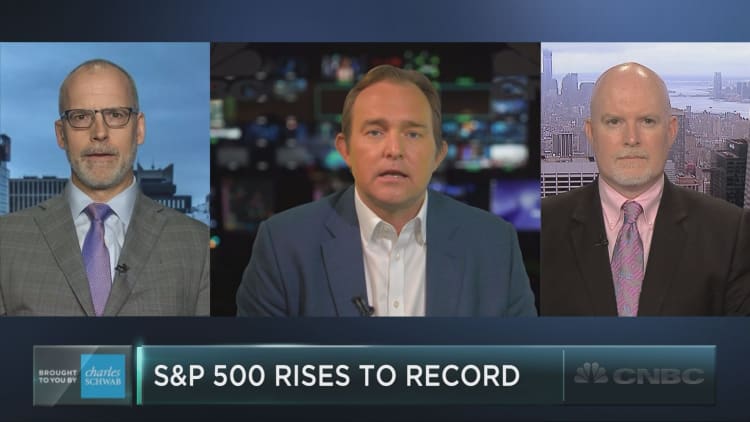
The three major U.S. stock markets have all made solid advances so far this year, but some strategists are cautioning the coming months' gains may not be as robust.
The , which has traded in a relatively narrow 80-point range since early March, is due for a bullish breakout that could run directly into technical resistance and perhaps spell trouble, according to Robert Sluymer, Fundstrat Global Advisors managing director of technical analysis.
"By traditional technical analysis, you could double that range; that's another 3.5 percent on the upside, another 80 points from 2,400. That takes it to roughly 2,480, and that happens to bring it right back to an uptrend that's been in place since 2016," he said Thursday on CNBC's "Trading Nation."
While another 3.5 percent of gains is not a wildly momentous move, Sluymer acknowledged, such a move higher would bring the index into an uptrend that's been in place since 2016, and "I think it starts to run into trouble there."
"We do have some longer-term cycle concerns about the market and we think that as we move into the summer we're probably going to see more evidence of a cycle peak developing, so we're getting more cautious as we move into the summer," he said.
Specifically, Sluymer pointed to stocks' average monthly momentum in the index giving him pause even as the index reaches new highs. That same data that turned him particularly bullish in the beginning of 2016 is now showing levels of peaking.
Additionally, the Russell 2000's performance relative to that of the S&P 500 is breaking below a long-term uptrend, which makes Sluymer think some of the market's leadership is beginning to shift and narrow to large caps.
"I think that's a concerning sign as we move into the summer," he said.
The broader market may be heading higher still, said Dennis Davitt of Harvest Volatility Management, but the options market appears to be flashing several negative signs about investor sentiment. While buying options is one way to obtain "insurance" to protect investors' portfolios, he isn't observing much upside call buying.
"There are far more negative people out there than there are positive people in the market, and I still think people are under-levered and underweight," he said Thursday.
Of course, so-called portfolio "insurance" to protect against a market downturn has never been cheaper, Davitt pointed out, given the CBOE volatility index's historically low levels.
Indeed, according to the options market investors appear to have less optimism around the S&P 500 seeing significant upside over the next few months than practically any other time in history.
As Stacey Gilbert, Susquehanna's head of derivative strategy, noted recently on CNBC's "Trading Nation," put prices are more expensive relative to calls than they've ever been before, based on data dating back to 1990.





